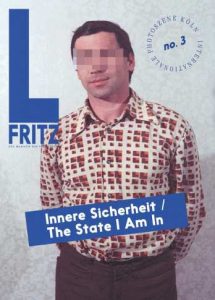©2016 Internationale Photoszene Köln gemeinnützige Unternehmergesellschaft (haftungsbeschränkt) i.G., photographers and authors [and translators]
Volatile Smile, by Julius Tambornino
At the place where great calamity takes its course, nothing menacing can be discerned at first: the workstations that artist duo Beate Geissler and Oliver Sann photographed for their series Volatile Smile, at Chicago high-frequency trading firms, radiate a yawning calm. In front of the dominant black of the switched-off monitors – multiply arranged in stacks and rows – there are only scattered, banal proofs of human presence: body lotion, Heinz ketchup, handwritten notes.
It is, however, precisely the sleeping machines which, at second glance, generate the feeling of a latent danger: they represent a principal characteristic of our age, in which mankind is obliged to share its millennia-old privilege of communication and decision-making competence with the computer. High-frequency trading at the stock exchange is probably one of the best illustrations that we have a while to go before dealing with this new situation appropriately. If, on the one hand, algorithms are able to manage speculation transactions autonomously in fractions of seconds, there are, on the other, the risks of this principle and the suffering that it generates when the transition to autonomy takes a wrong turn. In this respect, it seems that Geissler’s and Sann’s work is concerned not only with documenting something visible. Rather, it enquires into something that is evidently absent at this important interface: a moral authority.
Volatile Smile thereby links with more general issues of the technosphere, which has already preoccupied Geissler and Sann in many earlier projects. What impact does the freedom of autonomously self-managing computers have on our personal freedom? What is the virtual realm of the machine to the life-realm of mankind? And can such a sharp distinction even be drawn between the two?
[…]
In the synopsis of all the series, one thing becomes clear: Common to high-frequency trading and the computer game is the uninhibited in the virtual, where morality seems to be overruled. What if, though, virtual decisions are able to convulse physical lives millions of times over? Does not play then become negligence?
One of the high-frequency trading firms was not amused by such questions and threatened to sue the artists. The latter then made censorship itself the theme of their art: some of the images were overpainted for future exhibitions with a black lacquer, which allows the outlines of the photos to shine through and generates an optical relief. Others, in the style of Mephistopheles’s animal guise in Goethe’s Faust, were replaced by a poodle – the moment of self-unmasking was turned into its own chapter of this great story about technocapitalism.
